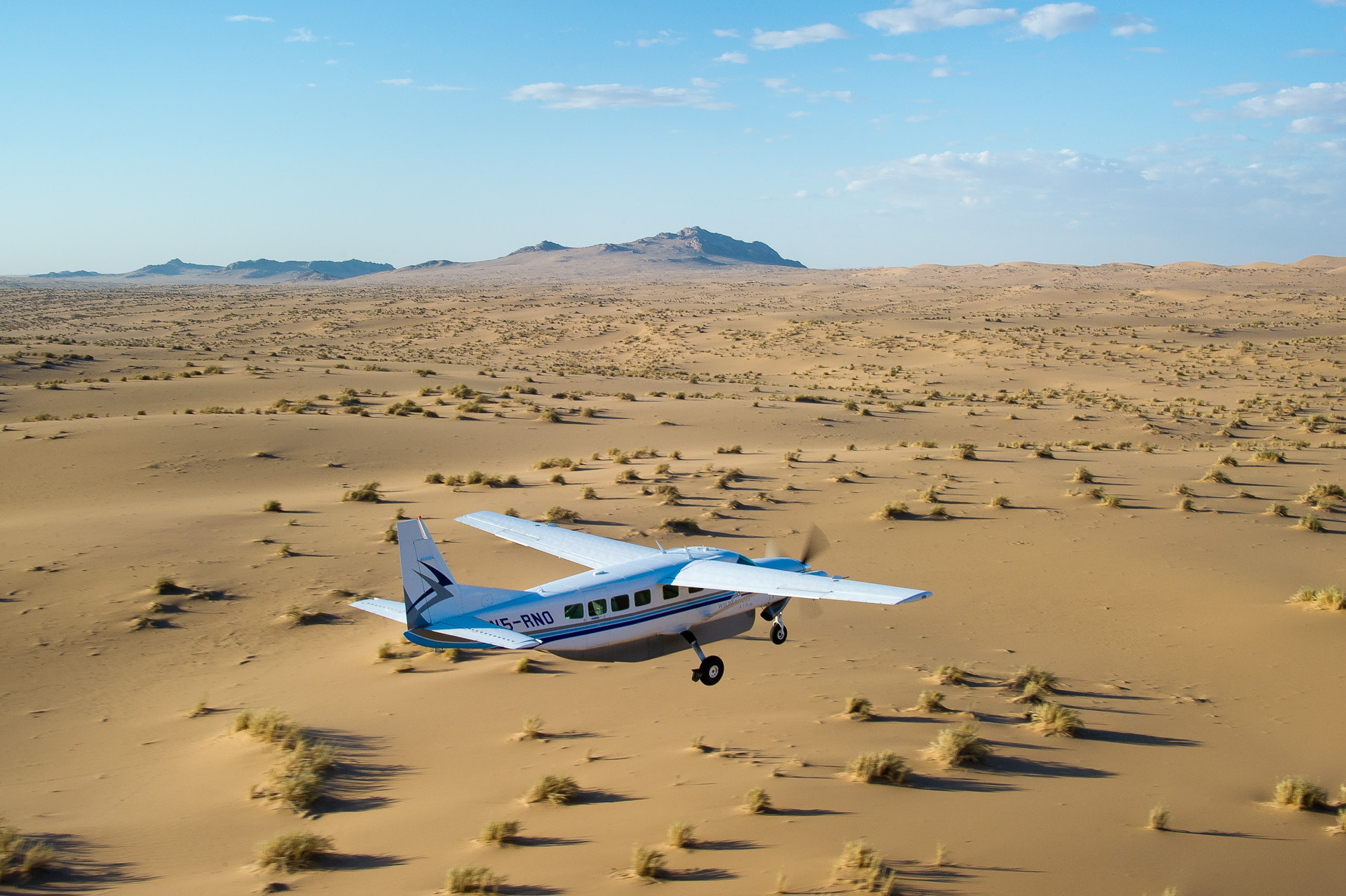NAMIBIA
Namibia is unlike any other country in Africa – it is a country completely defined by contradiction and contrast. Lying as it does on the cold Atlantic coast of Africa, yet predominantly consisting of desert, Namibia’s unique geography and climate make for some very specifically adapted flora and fauna. While the barking geckos and the desert elephant are indeed intriguing, it is often the landscape, humbling in its magnitude, which leaves a deep impression on one’s soul.
Despite the sheer scale of this country, it is well organized (an inheritance from its German colonial past) and well equipped with superb camps and lodges. The roads, though extremely long and unfeasibly straight sometimes, are excellent. Whether you choose to view the red rock mountain deserts of Damaraland and the wasted hulls of unfortunate ships along the Skeleton Coast from a light aircraft, or drive between the hump-backed dunes of the Namib, this harsh, bewildering, beautiful country is also surprisingly accessible.
It would be remiss not to mention the culture of Namibia, which is as strange and distinct as the landscape. Herero women, traditionally pastoralists, have adopted the dress of western colonials of another era and still wear heavy, long dresses with multiple petticoats, and a cloth hat shaped to mimic cow horns. The related Himba tribes of the north wear only the barest leather kilt and cowrie shell decorations, their skin shining with ochre and cow fat. The diminutive hunter-gathering San people are among the oldest tribes in Africa and their vivid rock art can still be seen at Twyfelfontein and other sites.
Cast aside your preconceptions of Africa before you travel here and prepare to suspend your disbelief.












